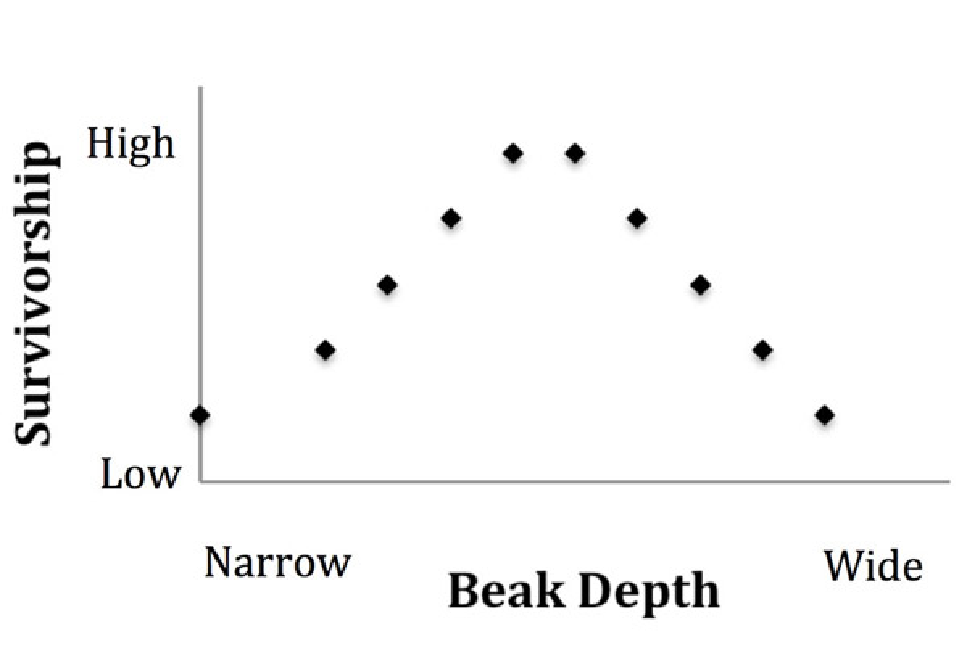Despite the aggressive defense of the cardiovascular system by the immune system, some microbes can invade and establish an infection in the blood. From the following list of microbes and their virulence factors, identify the mismatch.
A. Borrelia burgdorferi changes its surface antigens to avoid immune recognition.
B. Coxiella burnetii produces an endospore-like structure.
C. Trypanosoma cruzi cloaks itself in host proteins to avoid immune recognition.
D. Bacillus anthracis produces antioxidants to combat lysosomes.
Answer: D
You might also like to view...
The figure below shows the relationship between beak depth in the medium ground finch on Daphne Major and relative fitness. Assuming that beak depth is heritable, what do you predict about beak depth in the next generation?

A. Mean beak depth will decrease.
B. Mean beak depth will increase.
C. Mean beak depth will stay about the same.
D. Mean beak depth in the next generation cannot be predicted using this data.
Clarify Question
What is the key concept addressed by the question?
What type of thinking is required?
Gather Content
What do you already know about relative fitness? What other information is related to the question?
Choose Answer
Given what you now know, what information is most likely to produce the correct answer?
Reflect on Process
Did your problem-solving process lead you to the correct answer? If not, where did the process break down or lead you astray? How can you revise your approach to produce a more desirable result?
The bulk of the reabsorption of useful materials by the kidney takes place in the
A. renal corpuscle. B. proximal convoluted tubule. C. loop of Henle. D. distal convoluted tubule. E. collecting ducts.
Ferns, roots, and fronds grow from __________. Fill in the blank(s) with the appropriate word(s)
Oxygen and carbon dioxide are exchanged due to the process of
a. osmosis. b. facilitated diffusion. c. diffusion. d. Brownian movement. e. active transport.